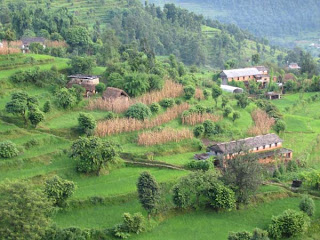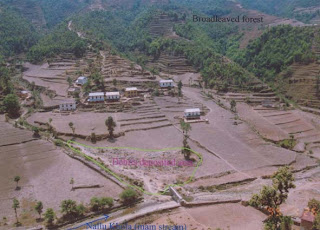Impact of Climate Change

A Brief Introduction
Climate is usually defined as the average weather or more accurately it is statistical distribution of climatological parameters in term of the mean and variability of relevant quantities over a period of time ranging from decades to thousands of years. The classical period is 30 years as defined by WMO. These relevant quantities are temperature, precipitation and wind.
Climate Change is defined as the change in the statistical distribution of weather over a periods of time that range from decades to thousands of years. It is a change in the distribution of weather events in average. Climate change may be limited to certain region or may occur across the whole earth. The climate change over a period of time are due to natural variability or human activities.
Studies of Himalayas glaciers by Nepalese and foreign scientists indicated that the Himalayas glaciers are retreating since last 150 years. In Nepal temperature was recorded since 1955 and the recorded temperature data are in increasing trend. The impacts of climate change are shown as particularly in glaciers where the glaciers are retreating in some places and forming the hundreds numbers of glacial lakes in Higher Himalayas in which twenty numbers of glacial lakes are in danger condition for GLOF but glaciers in some places are almost washed away completely. The formation of Imja glacial lake is an example of impacts of climate changes. Since 1955 to 1963 the area of Imja lake was 0.03Sq.km and its area was 0.75Sq.km in 1999. Similarly the area of Imja lake is increasing each year. Over the period of 50 years the volume of lake water was estimated 15 millions cubic meter. The Imja glacier lake is existing at the height of 5010m from the sea level. If the Imja glacial lake is outburst, the estimated 15 millions comics volume of water could be drained out. This flow will occur within a few hours of duration. The resulting flood could cause serious damages in down stream, threatening in human lives, live stokes, valuable farm land, bridges, hydro power plants, roads and other infrastructures. The impacts of the climate changes in Himalayas region are very high.
Especially in the context of environmental policy climate change usually refers to change in the average temperature on the earth. As the average temperature is increasing trend in Nepal, the impacts of climate changes are effectively occurred in all places from Terai low land to higher Himalayas. The impacts of climate changes are the retreating of hundreds numbers of glaciers where big rivers are originated or feedback from glacier. Many numbers of glacial lakes are in danger condition to outburst which is known as GLOF. The other threats are damages in down stream from GLOF, disbalances in whole ecological system, in environment change, in weather changing, changing the duration of monsoon periods, loses of agriculture products due to drought and floods, impacts on biodiversity and etc.
Factors that can shape climate are often called climate feedback. These climate feedback are variations in solar radiation, deviations in earth orbits, mountain building, continental drift and changes in green house gas concentrations. Some parts of climate changes system responds very slowly in reaction to climate changes feedback's because of its large masses. The climate system in oceans and ice caps respond very slowly because of their large masses. Therefore the climate change system can take some decades, century or longer to fully respond. The increase of carbon green house emission gases concentrations cause to increase average temperature on earth. The increase of average temperature on earth is known as the Global Warming. As the earth is getting warmer and warmer, the disasters like hurricane's, droughts and floods are continuing more frequently. Over The last 100 years, the average temperature of air near the earth's surface is increasing. The analysis of the recorded temperature data (from 1965 to 2000) shows that the increase in temperature is about 0.06 degree Celsius per year. The three hottest year ever observed have occurred in the last ten years. It is not only about how much the earth is warming, it is also about how fast it is warming. There has always been natural climate changes, but those changes were over a periods of 10,000 to 50,000 years. Now the question is how fast it is warming and why? The average temperature is increased as fast as we have seen over the last 30 years has never happened before. The other feedback for climate changes are Plate tectonics, Solar-outputs, Orbital variations, Ocean variability and human influences. In the duration of the Carboniferous period, Plate tectonics may have activated the large scale storage of carbon and increased glaciations.












